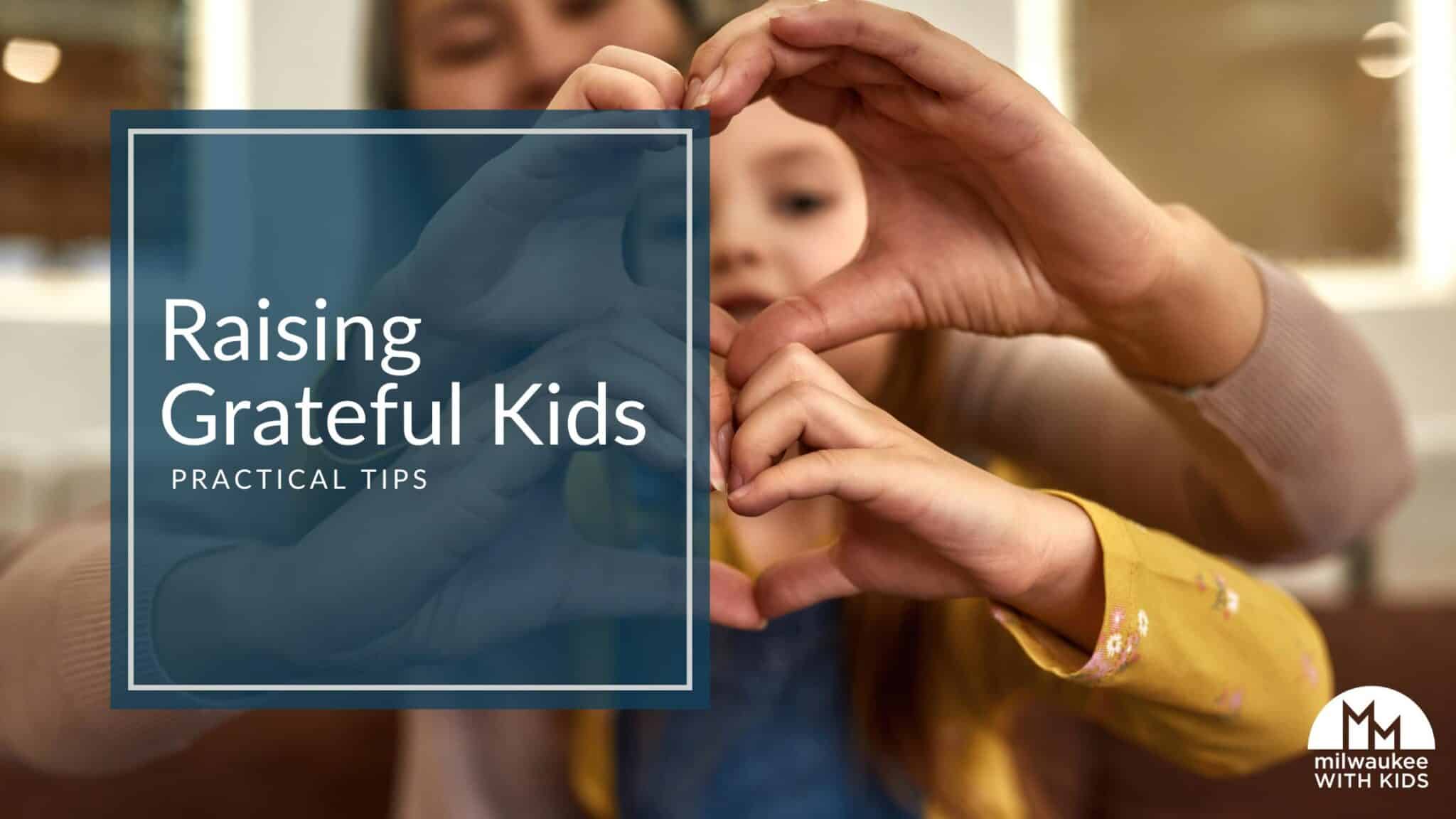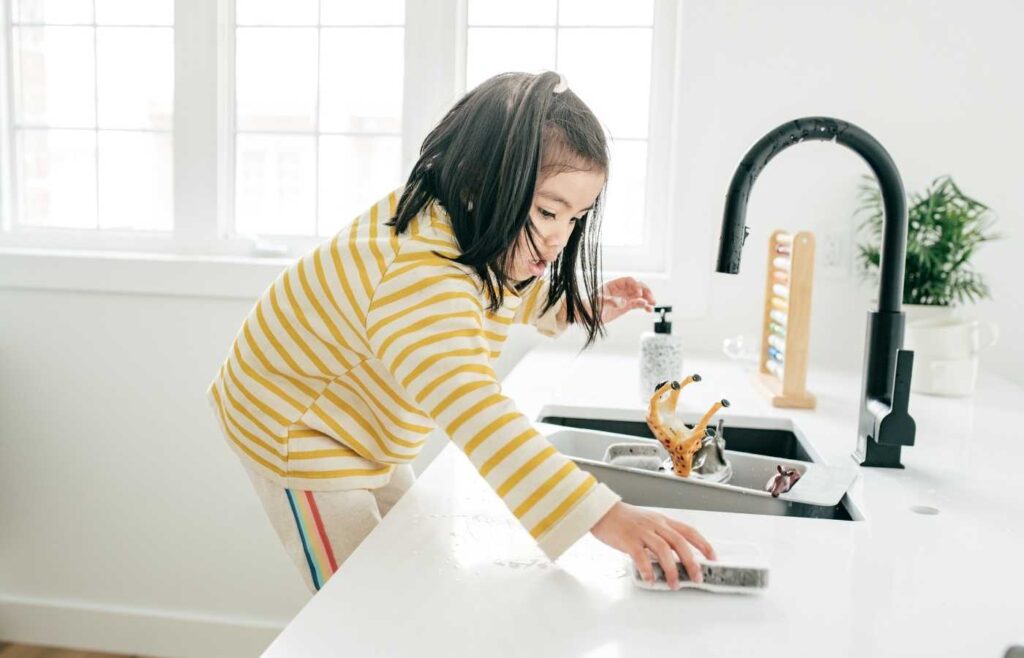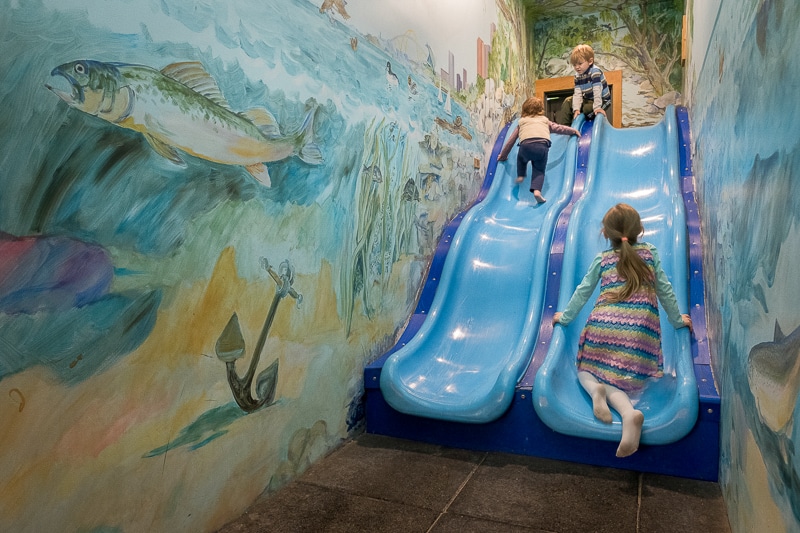
Raising kids who appreciate the little things in life sets them up for a lifetime of happiness, empathy, and resilience.
But how exactly can parents encourage gratitude in an age dominated by materialism and constant distractions?
Here are some tips to start incorporating into your everyday life:
Limit Materialism: Say “No” to More Stuff
In a world filled with instant gratification and constant advertising, cutting back on excessive purchases is one of the most effective ways to teach children gratitude. When kids are overwhelmed with material possessions, they often lose sight of the value in what they already have. By teaching them to appreciate experiences over things, you can help instill patience, mindfulness, and a greater sense of gratitude.
Introduce “Look Days”:
Designate “look days” where your family explores parks, stores, or museums without the intention of buying anything. These outings encourage kids to enjoy the experience and focus on what’s around them, rather than acquiring new things. Balance this with occasional “buy days,” where you make thoughtful purchases together.
Teach Kids the Value of Saying “No” to More Stuff:
Think of saying “no” to toys and gadgets as saying “yes” to appreciating what they already have. It’s tempting to say “yes” to the newest toy, but limiting material possessions allows kids to develop patience and avoid the entitlement that often comes with excessive consumption. This approach also encourages kids to care for and enjoy their belongings longer.
Start a Gratitude Practice
Creating a daily gratitude ritual is one of the simplest yet most impactful ways to raise children who are mindful and appreciative. By incorporating small, consistent practices into your family’s routine, you can help your kids focus on the positives in their lives and develop a lifelong habit of thankfulness.
Make Gratitude Part of Mealtimes:
At the dinner table, encourage everyone to share one thing they’re grateful for from that day. This simple practice fosters reflection and sets a positive tone for the meal. For families who say grace or a prayer, this can be a great time to express gratitude for the food and the people in your lives.
Incorporate Gratitude Into Bedtime:
Bedtime offers another great opportunity for reflection. Ask your kids to think about the best part of their day and what they’re thankful for before they go to sleep. Ending the day on a positive note can improve their mood and help them appreciate life’s little blessings.
Get Creative With Gratitude Jars:
Younger kids often enjoy hands-on activities, so consider creating a gratitude jar. Provide a mason jar and let your child decorate it with stickers, paint, or fabric. Each day, have them write down one thing they’re grateful for on a slip of paper or popsicle stick and place it in the jar. Over time, the jar will become a tangible reminder of all the good in their lives.
Encourage Older Kids to Keep Gratitude Journals:
For older kids and teens, a gratitude journal is a meaningful way to reflect. Encourage them to write down three things they’re grateful for each day. Research shows that gratitude journaling can boost mental health and foster a more positive outlook.
Consistency Is Key:
No matter what gratitude practice you choose, the key is to make it a regular part of your family’s routine. Even a few minutes of reflection each day can nurture a grateful mindset that benefits children—and the entire family—over the long term.
Assign Household Chores
Household chores are a practical way to teach kids responsibility and help them develop gratitude for the work that goes into maintaining a home. When children actively contribute to family routines, they’re more likely to appreciate the effort of others and take pride in their contributions.
Start With Age-Appropriate Tasks:
Assign chores that match your child’s age and ability. For young children, even simple tasks like picking up toys, brushing teeth, or getting dressed with assistance can foster a sense of responsibility. Older kids can take on more substantial tasks like:
- Setting the table or clearing dishes.
- Sweeping the floor or vacuuming.
- Folding and putting away laundry.
- Caring for pets (feeding or walking).
- Taking care of younger siblings.
Use Chore Charts for Clarity and Motivation:
To help kids stay organized, use printable chore charts. Charts displayed in a central location (like the fridge) make it easy to track progress. Rewarding accomplishments with a small weekly allowance or incentives can also teach kids the value of hard work and money management.
Get Kids Involved in Meal Prep:
Another great way to foster gratitude is to involve kids in cooking. From stirring ingredients to setting the table, meal preparation helps children understand the time and effort required to prepare food. Equip them with child-safe tools like a dull knife or apron so they can participate safely and proudly.
By teaching children to contribute to their family’s daily tasks, you’re helping them develop responsibility, compassion, and a lasting appreciation for the effort of others.
Encourage Thank-You Notes for Gifts
Teaching kids to express their gratitude through thank-you notes is a simple yet meaningful way to foster appreciation and strengthen their connections with others.
When your child receives a gift, encourage them to write a thank-you note or draw a picture as a personal way to say “thank you.” Younger kids can create colorful drawings or scribble their name, while older children can write a short message explaining what they loved about the gift or how they plan to use it.
This practice not only cultivates a habit of gratitude but also helps children recognize the thoughtfulness of the gift-giver. Plus, it reinforces social skills like kindness, empathy, and appreciation. Whether it’s a birthday, holiday, or any other occasion, teaching kids to express thanks ensures they grow up understanding the value of saying “thank you” and maintaining thoughtful relationships.
Give Back to the Community
One of the best ways to foster gratitude, empathy, and compassion in children is to involve them in community service. When kids see how their actions positively impact others, they develop a deeper appreciation for what they have and the importance of helping those in need.
Set aside a day for the whole family to dedicate time to a charity or non-profit organization that resonates with your values. This could be a yearly tradition or even a monthly activity, depending on your schedule.
Here are some meaningful ways to serve your community as a family:
- Visit nursing homes and spend time with the elderly.
- Write heartfelt letters to veterans or service members overseas.
- Serve meals at a local shelter.
- Create art projects or care packages for neighbors or families in need.
- Collect stuffed animals for children’s hospitals or local charities.
- Make sandwiches or snacks for those experiencing homelessness.
Even younger children can participate in small but impactful ways, helping them feel connected to the world around them. Here are some easy at-home community service projects to consider. Check with your local church, synagogue, or mosque for opportunities to get involved.
Giving back doesn’t just help the community—it also nurtures a sense of gratitude and responsibility in children, creating memories and values they’ll carry with them for life.
Read Books About Gratitude and Generosity
Books are a wonderful tool for teaching gratitude to children. Stories about kindness, generosity, and thankfulness help kids relate to these abstract concepts in a tangible way. Plus, reading together creates bonding time that reinforces these important lessons.
Look for books that highlight themes of gratefulness and giving back. Titles like “The Thankful Book” by Todd Parr or “Gratitude Is My Superpower” by Alicia Ortego are excellent starting points. After reading, discuss the book with your child to help them connect the story to their own life. Ask questions like, “What are some things you’re grateful for today?” or “How do you think the character felt after helping someone?”
Practice Random Acts of Kindness
Encourage your kids to practice random acts of kindness, both big and small. Helping others fosters empathy and teaches children to appreciate what they have. Simple acts like holding the door for someone, baking cookies for a neighbor, or donating toys and clothes can go a long way in nurturing gratitude.
Get the whole family involved by brainstorming acts of kindness together. Make it fun by creating a “Kindness Jar” filled with ideas for helping others. Let your child pick an act to complete each week. These activities help kids understand how their actions can positively impact others, building a deeper sense of gratitude for their own blessings.
Limit Screen Time and Encourage Mindful Moments
In today’s fast-paced digital world, kids are often overstimulated by screens and instant gratification. Limiting screen time gives children the space to focus on the present moment and recognize the good things around them.
Introduce mindfulness practices to your family routine. Activities like listening to music together or taking a walk in nature can help kids reflect on what they’re grateful for. Encourage them to notice small joys, like the beauty of a sunset or the sound of birds chirping. By fostering mindfulness, you help kids develop a greater awareness of their surroundings and an appreciation for life’s simple pleasures.
Focus on Experiences Over Things
Instead of piling up toys and material gifts during holidays and birthdays, consider giving your child the gift of meaningful experiences. Unlike material possessions, shared experiences create lasting memories, deepen family bonds, and teach kids the value of time together.
Choose Memorable Experience Gifts:
Gift options could include family memberships to local museums, passes to trampoline parks, or enrolling your child in art, music, or sports classes. These experiences provide opportunities for learning, growth, and fun that far outweigh the short-lived excitement of new toys. For example, a weekend camping trip or a day at the zoo can foster connection and joy that lasts long after the experience is over.
Shift the Focus from Things to Moments:
By prioritizing experiences over things, you show kids that the joy of shared moments matters more than accumulating possessions. Experiences help children build memories and relationships, fostering gratitude for the intangible things that make life meaningful.
Be a Role Model of Gratitude
As parents, our actions speak louder than words. If you want to raise grateful children, it’s essential to model gratitude in your daily life. Grateful parents raise grateful kids.
Here are some simple ways to show gratitude:
- Talk openly about the things you’re thankful for, whether it’s a sunny day, a kind gesture, or a quiet moment with your family.
- Thank your child when they’ve done something thoughtful, like helping with chores or sharing with a sibling.
- Celebrate small joys, like a warm cup of coffee or a favorite meal.
- Perform random acts of kindness, like holding the door for someone or donating to charity, and let your child see you do it.
- Tell your kids how much you appreciate them and why they’re special to you.
Teaching gratitude also means prioritizing people over possessions. Take time to reflect on the relationships in your life and the little things that bring happiness. By leading by example, you’ll show your children that gratitude isn’t just something you practice—it’s a way of life.
Gratitude may seem abstract, but your daily actions make it real and tangible for your children. By modeling these habits, you’re giving them one of the greatest gifts of all: a mindset of thankfulness that will serve them for a lifetime.
________________
FAQ: Raising Grateful Kids
1. Why is gratitude important for kids?
Gratitude helps children develop empathy, build stronger relationships, and improve their overall well-being. Studies show that grateful kids are happier, more resilient, and less likely to struggle with anxiety or depression.
2. How can I teach my child to be grateful?
Start by modeling gratitude in your own life. Encourage daily gratitude practices like saying “thank you,” reflecting on what they’re thankful for at dinner or bedtime, and writing thank-you notes for gifts. Involving kids in chores and community service projects can also foster gratitude.
3. What are some simple gratitude activities for kids?
Kids can keep a gratitude journal, create a gratitude jar, or share one thing they’re thankful for each day. Younger kids may enjoy drawing pictures as a way to express gratitude, while older kids can write thank-you notes or participate in community service.
4. How can I encourage gratitude during the holidays?
Focus on experiences over material gifts. Plan family activities like cooking together or volunteering. Encourage kids to write thank-you notes for any gifts they receive and discuss what they’re grateful for during family gatherings.
5. Does practicing gratitude have long-term benefits for children?
Yes! Practicing gratitude can lead to improved mental health, stronger social connections, and a more positive outlook on life. It helps children develop resilience and equips them with skills to navigate challenges as they grow.
6. Can chores teach kids gratitude?
Absolutely! Giving kids age-appropriate chores helps them understand the effort required to maintain a household. This involvement fosters a deeper appreciation for the work others do for them.
7. How do thank-you notes help instill gratitude?
Writing thank-you notes or drawing pictures teaches kids to reflect on the kindness of others and express their appreciation. This practice not only builds gratitude but also strengthens relationships with gift-givers.
8. How can I make gratitude a habit in my family?
Incorporate daily rituals like sharing gratitude at meals or bedtime. Use tools like gratitude jars or journals to make the practice fun and engaging. Consistency is key to turning gratitude into a lifelong habit.
9. Can community service help kids be more grateful?
Yes! Participating in community service projects helps kids understand the challenges others face and encourages them to appreciate what they have. Activities like donating toys or helping at a shelter can be powerful lessons in gratitude.
10. What books can help teach kids about gratitude?
There are many great children’s books that teach gratitude and generosity, such as “The Thankful Book” by Todd Parr and “Gratitude Soup” by Olivia Rosewood. Reading these together can spark meaningful conversations about thankfulness.
Happy Thanksgiving, Milwaukee With Kids readers! We’re thankful for your continued support.
Related Posts:
Calie Herbst, Editor-in-Chief of Milwaukee With Kids, has spent over a decade combining her experiences as a parent of three to create a hub for Milwaukee’s family adventures.
Her decade-long teaching career in Milwaukee Public Schools and academic background, including a Master’s in Teaching from Marquette University and dual B.A.s in Sociology and Spanish from the University of Wisconsin – Madison, fuel her passion for inclusive and engaging family content.
Calie is also a recognized voice in local media, contributing to WISN Channel 12 News, WTMJ Wisconsin Morning News, Fox 6’s Real Milwaukee, and B93.3.
Discover more about Calie’s journey and editorial approach on her About Page and Editorial Policy Page.










